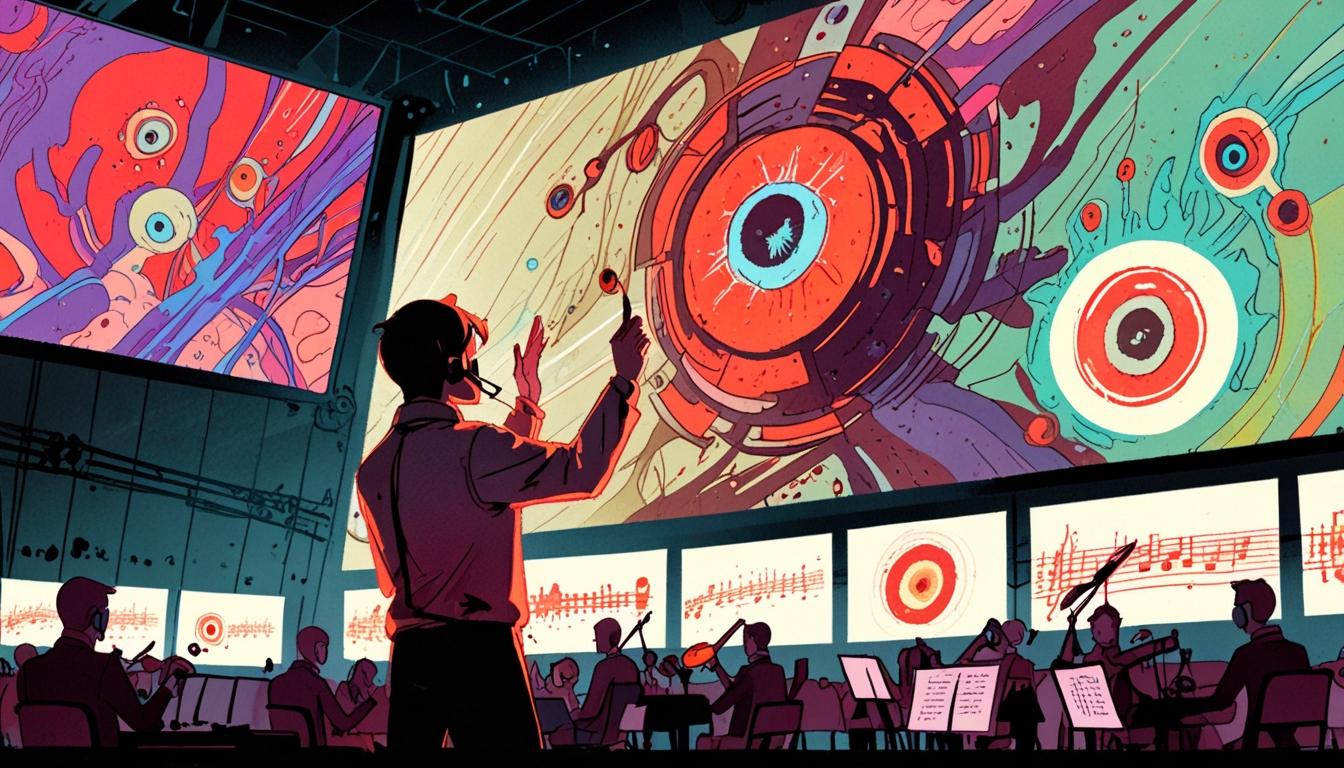The Southbank Centre’s Multitudes festival has delivered a compelling fusion of orchestral brilliance and innovative visual art in its recent presentation of Shostakovich’s Leningrad Symphony. Held under the auspices of the Royal Philharmonic Orchestra, the event combined music with evocative imagery crafted by Russian art and film director Kirill Serebrennikov alongside video artist Ilya Shagalov.
The concert opened with a brief but powerful first half, featuring Sibelius’s Finlandia and Kurt Weill’s Four Walt Whitman Songs. Conductor Vasily Petrenko led a dynamic and nuanced performance of the Finlandia, skilfully highlighting dramatic contrasts within the piece, from the intense, rasping low brass at the opening to the triumphant finale celebrating national identity. Following this, baritone Roderick Williams delivered the Four Walt Whitman Songs with notable clarity and musical sensitivity. The settings by German émigré Weill, known for their intricate interweaving of nationalistic poetry and music, were rendered with “honest simplicity and razor-sharp diction,” according to the review, avoiding any dilution of their poetic intensity.
The main highlight was Shostakovich’s Leningrad Symphony, presented with a powerful interplay of sound and image. Serebrennikov and Shagalov’s visual accompaniment capitalised on Petrenko’s energetic and richly textured interpretation of the symphony, providing “extra-cerebral stimulation” without overshadowing the music. The imagery unfolded across three large screens, depicting a tapestry of narratives that expanded the symphony’s traditional themes of Soviet endurance during the siege of Leningrad to encompass broader reflections on humanity’s technological excesses.
The visual programme drew on 20th-century constructivism aesthetics, infused with elements of contemporary science fiction, illustrating motifs from a psychedelic orbital eyeball to haunting red-hued vegetation evocative of a post-apocalyptic world. The symphony’s four movements were matched with distinct yet interwoven visual stories: The opening Allegretto depicted the Icarus myth, amplifying the tension of the symphony’s battle theme; the second movement’s lighter, agile music was paired with imagery of dancing cells and neural synapses; the Adagio was portrayed with poignant, somber scenes reflecting desolation; and the finale saw a burst of Technicolor flowers blossoming in visual harmony with the music’s climactic energy.
Throughout, Petrenko conducted with visible emotion and precision, maintaining flawless control and delivering a performance that was both vividly musical and theatrically compelling. The successful integration of artistic disciplines at this performance illustrates the creative potential of multidisciplinary festivals like Multitudes in pushing the boundaries of classical music presentation.
Source: Noah Wire Services
